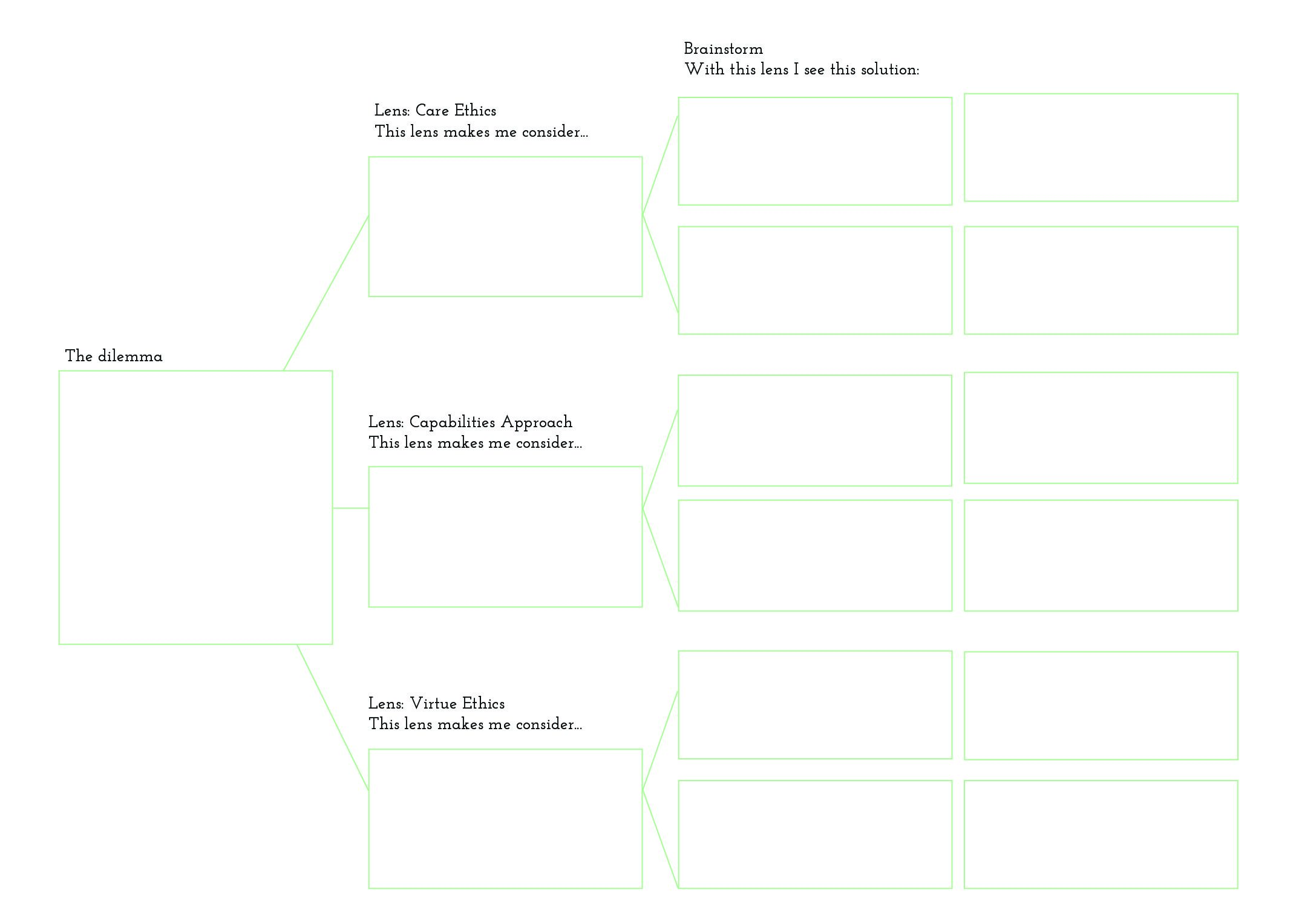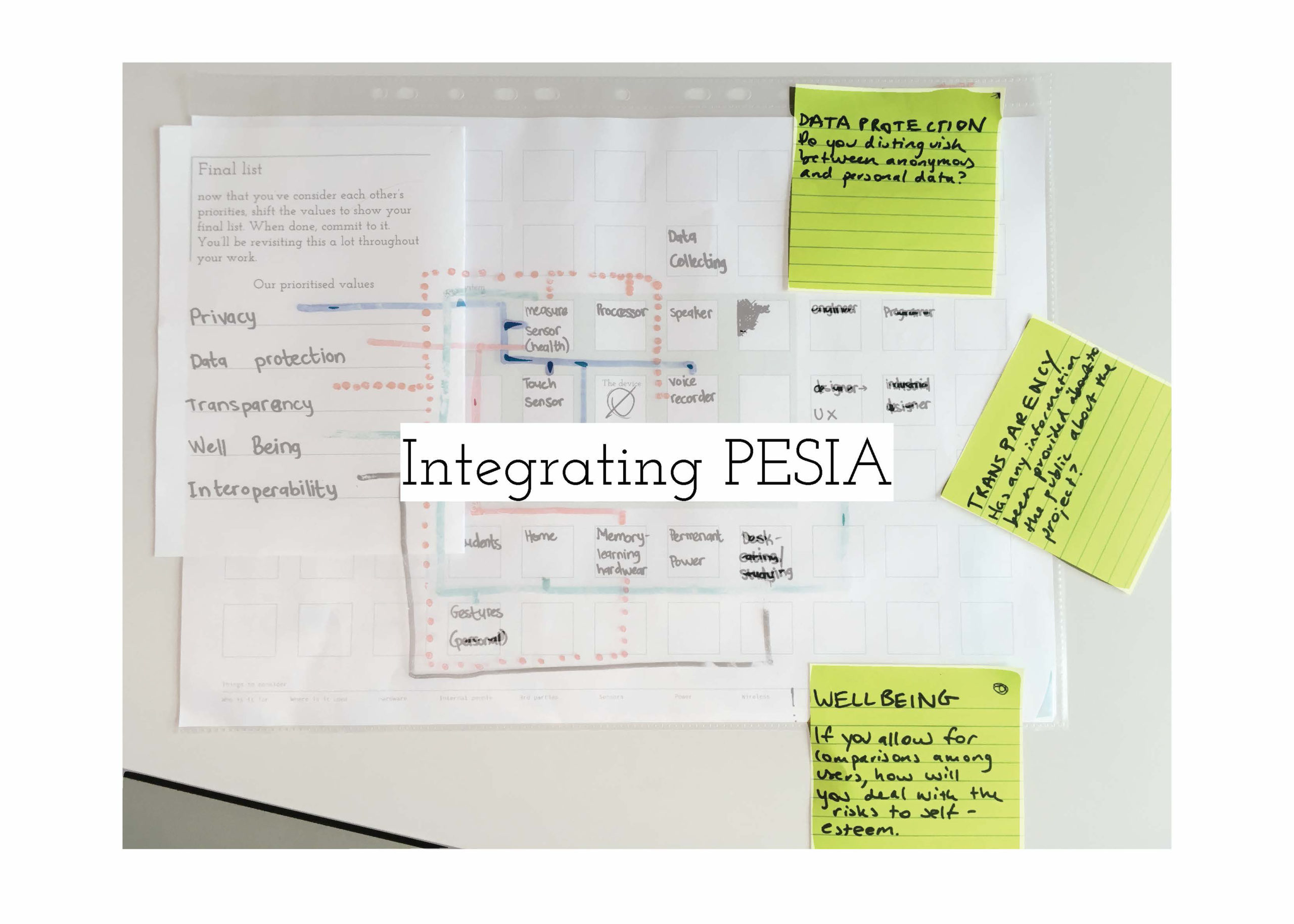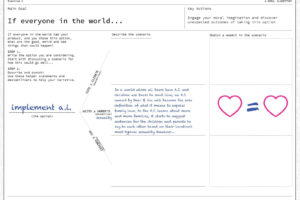Stakeholder workshop: who is responsible for ethics and how?
Goals
The aim is to have diverse participation from key developer communities, policy actors and users. It is useful to promote some manageable conflict through the composition of the group in order for concepts to be challenged.
Approach
We divide the workshop along with three main topics designed to walk people through different ways of thinking about ethics, impact and assessment.
1. Ethical Framework
2. Privacy Ethical Social Impact Assessment
3. Tools for designers and developers
1. Ethical Framework
Most tech ethics workshops seldom cover the foundational aspects of ethics and assumptions made in the development of their instruments. The first session unpacks the selected approach to ethics in an accessible manner and explains it in the context of wider ethical debates. The main objective of this session is to develop a shared language between designers, policymakers and other stakeholders through exercises and presentations that:

Uncover pre-existing understandings of ethics and tech among participants (20 minutes)
Set out the need for ethics and explain why we are critical of the mainstream approaches. (30 minutes)
(10-minute break)
Present the VIRT-EU ethical framework (30 minutes)
Elicit critical feedback and discuss the framework (20 minutes)
Issues to be incorporated in the running of this section:
● How technology ethics will lead to changes in the landscape of connected devices (IoT) and tech. Can consumer pressure or developers by themselves change the status quo? How? Systemic issues beyond devices and individual designers, teams or companies are important and in previous workshops participants have asked about this.
● Keep the buzzwords out as much as possible: ethics, values, particularly avoid rights and legalities. Focus on responsibilities, accountability, dependencies and obligations. In prior workshops, a focus on legal issues tended to short-circuit broader discussions.
● Who is responsible for ethics? Some tech ethics practitioners, such as Cennydd Bowles, argue this is the responsibility of the product manager, but many companies don’t have the role. Try to discuss these issues.

2. PESIA (Privacy Ethical Social Impact Assessment)
This section discusses the PESIA questionnaire model available below.
Discuss best practices for presenting the PESIA questionnaire (e.g. within an organisation or by consultants or advocates)
Discuss any usability issues to be communicated to the creators of the PESIA, considering that it is designed as a practical tool that can be used without the need to engage a legal specialist.
Consider what additional resources, tools or information are needed in order for the PESIA to be implemented in design practice in a useful manner.
Explore what structure and methods are required for people to engage with PESIA.
Issues to consider in the running of the session
●Focus on ethical and social dimensions. You should cover data protection aspects but it may be useful to mainly focus on the ethical and social sides, testing a selection of the questionnaire and related tools.
● Please refer to our list of examples to illustrate the ethical issues of “pathological cases” you can use in your discussions.
● Use breakout groups, ensuring everyone gets a chance to speak. The participatory aspects of PESIA are critical and you should discuss this as part of the session.
● Try to push the discussion towards positive action and not just mitigations. Risk is a central element of impact assessments but we want to go beyond consequentialism, mitigation and think about positive values.
3. Tools for designers and developers
The session has two main objectives, testing selected tools or elements and presenting and discussing the project’s portfolio of ethical tools and how to choose the right tool.
Issues to consider in the running of the session
- This part of the workshop is highly interactive and requires participants to be engaged and the facilitators to be very active.
- You need to be able to elicit and generate good specific questions.
- The tools work standalone with specific cases or products in mind.
- You can combine the tools with the PESIA questionnaire.
Presentation of VIRT-EU tools and rationale.
Exercise: Speculative fiction – mapping and values
Imagine you are one of the developers. You are working on this product (description, diagram). You want to understand what the potential ethical issues might be.




